- News
- Reviews
- Bikes
- Accessories
- Accessories - misc
- Computer mounts
- Bags
- Bar ends
- Bike bags & cases
- Bottle cages
- Bottles
- Cameras
- Car racks
- Child seats
- Computers
- Glasses
- GPS units
- Helmets
- Lights - front
- Lights - rear
- Lights - sets
- Locks
- Mirrors
- Mudguards
- Racks
- Pumps & CO2 inflators
- Puncture kits
- Reflectives
- Smart watches
- Stands and racks
- Trailers
- Clothing
- Components
- Bar tape & grips
- Bottom brackets
- Brake & gear cables
- Brake & STI levers
- Brake pads & spares
- Brakes
- Cassettes & freewheels
- Chains
- Chainsets & chainrings
- Derailleurs - front
- Derailleurs - rear
- Forks
- Gear levers & shifters
- Groupsets
- Handlebars & extensions
- Headsets
- Hubs
- Inner tubes
- Pedals
- Quick releases & skewers
- Saddles
- Seatposts
- Stems
- Wheels
- Tyres
- Health, fitness and nutrition
- Tools and workshop
- Miscellaneous
- Tubeless valves
- Buyers Guides
- Features
- Forum
- Recommends
- Podcast
BUYER'S GUIDE
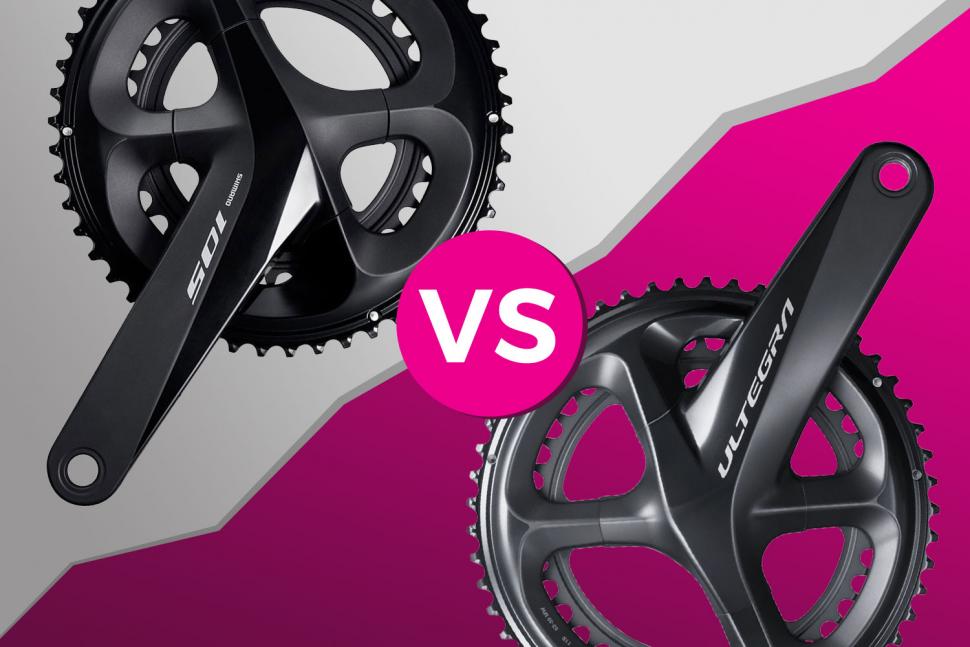 headtohead-Shimano105R7000vShimanoUltegraR8000
headtohead-Shimano105R7000vShimanoUltegraR8000Shimano 105 v Shimano Ultegra — choose the best groupset for you
[This article was last updated on May 6, 2021]
If you’re deciding between Shimano 105 and Shimano Ultegra groupsets, either on a complete bike or as an upgrade, here’s everything you need to know to make the right choice.
-
Both Shimano 105 and Shimano Ultegra are 11-speed groupsets with the same capacity for sprocket and chainring sizes
-
Shimano Ultegra is a bit more refined that Shimano 105, with lighter materials in some areas and details like more durable coatings on some parts
-
Nevertheless, the weight difference is surprisingly small, less than 200g for a typical ensemble; most of the difference is in the brake/shift levers and chainset
-
Features trickle down from Shimano's pro-level Dura-Ace groupset, so its next refresh will tell us what to expect the following years from Ultegra and 105
-
The executive summary: Ultegra is a bit lighter and more durable; it's the way to go if you're racing or logging mega miles and can't afford Dura-Ace, but for most riders 105 does the job admirably
Starting at the basics, a groupset is a component manufacturer’s collection of mechanical parts, usually covering the derailleurs, shifters, brakes, chainset, cassette and chain. Brands group these parts together in various different levels.
Going from the top, Shimano's current road groupsets are:
• Dura-Ace
• Ultegra
• 105
• Tiagra
• Sora
• Claris
• Tourney
Additionally, Dura-Ace and Ultegra are available with Di2 electronic shifting. We’ll leave Di2 to one side here because there’s no 105 version to consider. If you want it, your decision is between Ultegra Di2 and Dura-Ace Di2, and that’s outside the scope of this article.
Check out our Complete Guide to Shimano Road Groupsets.
Shimano usually updates each groupset every three years. The latest version of Shimano 105 is called R7000 (the disc brakes are R7020) and the most up to date Ultegra is R8000 (the disc brakes are R8020, the Di2 is R8050 and Di2 with hydraulic disc brakes is R8070).
A Shimano 105 groupset with rim brakes retails at £612.91 (without pedals) while an equivalent Shimano Ultegra groupset is £982.91 (without pedals) – that’s £370 more, but what do you actually get for the extra money?
We quote official recommended retail prices here, of course, but we've also included typical online prices. The weights listed below are Shimano’s official figures.
Both 105 and Ultegra are 11-speed systems and there are many more similarities between them than differences. Although Ultegra is more expensive, all of the same technology features in 105, and you operate them in exactly the same way.
The differences are mainly down to materials used, and because of this 105 components are a little heavier.
We've put all the prices and weights into a table at the bottom, just to make life easier for you.
Check out our full Shimano 105 review here and read our full Shimano Ultegra review here.
Dual control levers
| RRP | Weight | Typical price | |
| 105 | £214.99 | 500g | £189.00 |
| Ultegra | £324.99 | 438g | £299.99 |
The dual control levers are high points of both the Ultegra and 105 (above) groupsets and they each work in exactly the same way. They’re slim and comfortable to use with a short stroke and a light action (much lighter than earlier incarnations).
When he reviewed the Ultegra levers (above) Stu Kerton said, “The biggest difference of R8000 [current generation Shimano Ultegra] over 6800 [the previous version] is the shape of the brake lever. The curve for your index finger is more pronounced and if, like me, you like to wrap your finger around the bar when on the hoods then you'll find it very comfortable.
"The shape allows you to use just your second finger for braking to slow down, and to quickly add all your fingers for hard braking efforts."
The 105 levers have been redesigned with shifting mechanisms that make the shift a bit more snappy than before, and the shape of the lever is squarer, slightly more compact and features a patterned rubber cover for extra grip on the hoods.
There is a difference in the materials used. Ultegra dual control levers have carbon-fibre reinforced plastic brackets and main levers while 105 has glass-fibre reinforced plastic brackets and aluminium main levers.
The 105 levers are a little heavier but you won’t notice any difference in performance.
Shopping tip: check out Decathlon's workshop spares section, often the cheapest source for single levers.
Chainset
| RRP | Weight | Typical price | |
| 105 | £154.99 | 713.4g | £111.99 - £139.99 |
| Ultegra | £259.99 | 674g | £259.99 |
The 105 chainset (below) has a spider with four unevenly spaced arms, the idea being to provide stiffness where it’s needed while saving weight over a five arm design. This is technology that started off in the top-level Dura-Ace groupset and has trickled down via Ultegra.
Both 105 and Ultegra (below) are available with 53-39-tooth, 52-36-tooth and 50-34-tooth chainrings, and Ultegra is also available in a 46-36-tooth cyclocross option. All of them use the same bolt circle diameter (110mm) so you can easily swap a 53-tooth outer chainring for a 50-tooth, for example.
The 105 and Ultegra chainsets use the same technology and the same materials in key areas. Although many rivals have shifted to carbon-fibre cranks, Shimano has stuck with aluminium. Its Hollowtech technology results in a hollow crank arm to keep the weight low while retaining stiffness.
The 105 chainset's outer chainring is heavily machined on the inside face to reduce weight, retaining splines across the machined section to make sure stiffness isn't compromised. It's not quite as technically advanced as the Ultegra outer chainring which features a two-piece construction, but you wouldn't know unless you looked at it from the back. The design is a bit more susceptible to storing grime in all the recesses but that's not a huge issue.
As usual, there’s a slight weight penalty if you go for 105.
Whereas some chainsets feature a aluminium axle in a 30mm diameter, Shimano uses a steel axle with a 24mm diameter across the board.
The weights given above are for chainsets with 50/34-tooth chainrings.
Front derailleur
| RRP | Weight | Typical price | |
| 105 braze on | £38.99 | 95g | £40.00 |
| 105 band on | £38.99 | 111g | £35.00 |
| Ultegra braze on | £50.99 | 92g | £48.99 |
| Ultegra band on | £50.99 | 106g | £65.00 |
The 105 (above) and Ultegra (below) front derailleurs each come with a glass-fibre reinforced plastic outer link, an aluminium inner link, a chrome-plated steel chain guide, and light shifting. A trim position allows you to avoid chain rub as you move across the cassette.
Both the Ultegra and 105 front derailleurs have been redesigned and use a cam arrangements to actuate the shift, allowing the units to be much more compact than before.
They each feature a tension adjustment screw, which means there's no need for an inline barrel adjuster.
The largest chainring recommended for use with each of them is 53-tooth. That’s fine for most people although some time trialists who like pushing big gears might struggle.
Rear derailleur
| RRP | Weight | Typical price | |
| 105 short cage | £51.99 | 225g | £45.99 |
| 105 medium cage | £56.99 | 232g | £49.00 |
| Ultegra short cage | £86.99 | 200g | £86.99 |
| Ultegra medium cage | £92.99 | 210g | £92.99 |
| Ultegra RX800 | £89.99 | 248g | £NA |
Both Ultegra and 105 (below) rear derailleurs are available in short cage (SS) and medium cage (GS) versions to suit the chainset and cassette that you are using. Go for the medium cage version of either and the maximum sprocket size you can officially use is 34T (although in reality they'll handle much more).
They're similar to one another in terms of materials although the Ultegra model has better pulley bearings.
For the latest versions of its top three groupsets, Dura-Ace, Ultegra and 105, Shimano has incorporated its Shadow technology, brought over from the mountain bike side of the business.
Its design means that the rear derailleur profile is much narrower when you look at the bike from the rear, sitting 12mm closer to the bike when in the bottom sprocket of the cassette. This means that should you crash or the bike gets blown over there is less chance of damage to the bike or wrecking your gear hanger.
The new design is compatible with direct mount frames, although there aren't many of those in the road sector right now.
In his review of Shimano Ultegra R8000 Stu said, "The gear shifts feel slightly quicker and lighter than on 6800, and it really is a joy to use."
Once set up, we found 105 shifting to be precise and consistent across the whole cassette. It's crisp and light whether you're using the short cage or the medium cage rear derailleur.
As well as the normal rear derailleurs, Shimano offers clutch-operated Ultegra RX options (£89.99 for the cable-operated version, £259.99 for the Di2 version) which are aimed at the gravel/adventure market. There's no Shimano 105 clutch derailleur.
Cassette
| RRP | Weight | Typical price | |
| 105 | £48.99-£56.99 | 269g (12-25) | £48.99 - £56.99 |
| Ultegra | £74.99-£79.99 | 243g (12-25) | £72.70 - £75.30 |
Both 105 and Ultegra are 11-speed systems. 105 cassettes (above) are available in 11-28-tooth, 11-30, 11-32, 11-34 and 12-25 options. Ultegra is available in all of those plus 11-25 and 14-28. There’s no reason why you can’t use an Ultegra cassette with an otherwise 105 groupset, or vice versa.
With both 105 and Ultegra, the largest sprocket you can officially use is a 34-tooth, although in truth you can go much larger than that; we have gear systems with 11-40 cassettes that work very happily.
In both cases, the sprockets are made from nickel-plated steel, although an Ultegra cassette has a carbon/aluminium spider arm and an anodised aluminium lockring while a 105 cassette has an aluminium spider and a nickel-plated steel lockring. These differences make for a difference in weight, but we're talking about 23-35g, depending on the size of the cassette.
Dual pivot brakes
| RRP | Weight | Typical price | |
| 105 | £47.99 | 379g (pair) | £41.00 |
| 105 direct mount | £49.99 | 346g (pair) | £40.99 |
| Ultegra | £74.99 | 360g (pair) | £49.99 |
| Ultegra direct mount | £79.00 | 320g (pair) | £72 / £64 |
Both Ultegra and 105 SLR EV dual pivot rim brakes are made from anodised aluminium and we rate them very highly. They’re essentially the same design: a symmetrical twin pivot system that’s designed to equalise the braking forces through each arm allowing for better control and power.
In reviewing the 105 brakes (above) Dave said, “The Shimano symmetrical dual-pivot brakes are, for me, the best road rim brakes out there. They have a very solid feel and modulation is excellent. I've been using the brakes on my race bike, which has Swiss Side Hadron 485 wheels that have an alloy brake track, and the brake performance is about as good as you're going to find for a rim brake. The 105 callipers are not noticeably inferior to the Ultegra brakes in anything other than weight, and even there the difference isn't great."
The maximum tyre width Shimano recommends for its Ultegra (above) and 105 SLR EV Dual Pivot brakes (below) is 28mm.
Shimano also offers direct mount brakes in both the Ultegra and the 105 groupsets. They’re virtually identical to one another, each taking tyres up to 28mm.
Hydraulic disc brakes
| RRP | Weight | Typical price | |
| 105 levers and calipers | £540.00 | 895g | £540.00 |
| 105 disc brake rotor | £29.99 | 133g (160mm) | £29.99 |
| Ultegra levers and calipers | £649.98 | 840g | £649.99 |
| Ultegra disc brake rotor | £49.99 | 128g (160mm) | £50.20 |
Shimano has offered 105-level and Ultegra-level hydraulic disc brakes for some time but it's only recently that designs have actually been incorporated into each of the groupsets.
The new Shimano 105 mechanical shift/hydraulic brake dual control unit is based on the cable-operated version (above), with the same lever design and a similar hood profile with the textured finish for better grip in the wet. The body of the hood is a bit bigger, especially at the bottom where the hose exits the lever, but not so much that it's a problem.
Read our Shimano 105 R7020 hydraulic disc brake review here
The 105 system has an aluminium brake lever while it's engineering composite if you go for Ultegra, which is a little lighter.
Will you notice a difference in the quality of the braking if you opt for more expensive Ultegra? In short, no. It works brilliantly whichever you choose.
You can buy a brake calliper and dual control lever separately (see table above) or you can buy a set that includes the lever, the brake calliper and the hose (£249.99 per brake in the case of 105, £309.99 per brake for Ultegra).
You'll also need to factor in £55.98 for two Shimano 105-level disc rotors, or £99.98 for two Ultegra-level rotors to complete the package.
Chain
| RRP | Weight | Typical price | |
| 105 | £32.99 | 257g (114 links) | £30.00 |
| Ultegra | £37.99 | 257g (114 links) | £29.00 |
Both the Ultegra and 105 chains undergo a Sil-Tec low friction plating process that’s designed to make them run smoother and require less maintenance, as well as increasing the durability.
The only difference between them is that the 105 chain has this treatment on the roller link plates (the inner ones) only while the Ultegra chain (above) has it on the pin link plates (the outer ones) too.
It's great to see that Shimano is finally offering its chains with a quick link similar to those used by KMC and others, making them much easier to fit and remove.
Bottom bracket
| RRP | Weight | Typical price | |
| 105 | £29.99 | 77g | £25.99 |
| Ultegra | £29.99 | 77g | £25.99 |
Shimano recommends the same bottom bracket whether you go for an Ultegra or a 105 groupset. The BBR60 (77g) is available in both British and Italian threaded versions, while the BB72-41 (69g) is for press-fit systems.
Pedals
| RRP | Weight | Typical price | |
| 105 | £119.99 | 265g | £90.90 |
| Ultegra | £149.99 | 248g | £119.99 |
The Ultegra and 105 (below) pedals both have wide carbon composite bodies, widely spaced bearings, chromoly steel axles and adjustable entry and release tension. The Ultegra pedals have slightly more stainless steel body plating, designed to reduce flex and wear, and a little more clearance (33° as opposed to 31°).
The Ultegra pedal is also available in a version with a 4mm longer axle for more clearance between the crank arm and your shoe.
Conclusion
If you’ve read everything above, looked at the pictures, and come to the conclusion that there’s not all that much difference between 105 and Ultegra components, you’re right. They work in the same ways, the shaping is the same and so is the engineering. There are no major technological features in the Ultegra groupset that aren’t included in 105.
| 105 | Ultegra | |||
| Price | Weight | Price | Weight | |
| Dual control levers | £214.99 | 500g | £324.99 | 438g |
| Chainset | £154.99 | 713g | £259.99 | 674g |
| Front derailleur (braze on) | £38.99 | 95g | £50.99 | 92g |
| Rear derailleur (short cage) | £51.99 | 225g | £86.99 | 200g |
| Cassette | £56.99 | 269g | £79.99 | 243g |
| Dual pivot brakes (pair) | £95.98 | 379g | £149.98 | 360g |
| Chain | £32.99 | 257g | £37.99 | 257g |
| Pedals | £119.99 | 265g | £149.99 | 248g |
| Bottom bracket | £29.99 | 77g | £29.99 | 77g |
| Total | £796.90 | 2,780g | £1,170.90 | 2589g |
Table comparing the prices and weights of Shimano 105 and Shimano Ultegra components
The differences are minor and mostly come down to materials. This results in Ultegra components being a little lighter than their 105 counterparts. No single Ultegra component is massively lighter and the small savings add up to just 191g across a whole groupset (the figure could be a little more or a little less than that depending on exactly which options you choose).
We reckon that 105 is as good as it gets in terms of bangs per buck right now and there is no compromise in functionality: this groupset is better than top-level Dura-Ace was a few years ago, for a fraction of the price. There's no aspect of its performance that would be meaningfully improved by going one rung up the groupset ladder.
We awarded both Shimano 105 and Ultegra 10/10 for performance, and we give out very few 10/10 marks. We marked Ultegra 7/10 for value while giving 105 9/10 courtesy of offering a very similar level of performance at a significantly lower price. That might or might not be important to you.
Whether the small weight saving you get with Ultegra is worth the extra cash is something you have to decide for yourself based on your bank balance and your priorities.
Explore the complete archive of reviews of groupsets on road.cc
About road.cc Buyer's Guides
The aim of road.cc buyer's guides is to give you the most, authoritative, objective and up-to-date buying advice. We continuously update and republish our guides, checking prices, availability and looking for the best deals.
Our guides include links to websites where you can buy the featured products. Like most sites we make a small amount of money if you buy something after clicking on one of those links. We want you to be happy with what you buy, so we only include a product if we think it's one of the best of its kind.
As far as possible that means recommending equipment that we have actually reviewed, but we also include products that are popular, highly-regarded benchmarks in their categories.
Here's some more information on how road.cc makes money.
You can also find further guides on our sister sites off.road.cc and ebiketips.
road.cc buyer's guides are maintained by the road.cc tech team. Email us with comments, corrections or queries.
Mat has been in cycling media since 1996, on titles including BikeRadar, Total Bike, Total Mountain Bike, What Mountain Bike and Mountain Biking UK, and he has been editor of 220 Triathlon and Cycling Plus. Mat has been road.cc technical editor for over a decade, testing bikes, fettling the latest kit, and trying out the most up-to-the-minute clothing. He has won his category in Ironman UK 70.3 and finished on the podium in both marathons he has run. Mat is a Cambridge graduate who did a post-grad in magazine journalism, and he is a winner of the Cycling Media Award for Specialist Online Writer. Now over 50, he's riding road and gravel bikes most days for fun and fitness rather than training for competitions.
Latest Comments
- mdavidford 6 min 53 sec ago
I'm not really clear the relevance of plastering tips in this context.
- hennahairgel 7 min 6 sec ago
As per the DC Rainmaker article, GDPR means the data stays in the users' ownership, where GDPR applies (EU & UK). How Strava the enhance it is...
- brooksby 19 min 5 sec ago
https://www.bristol247.com/news-and-features/news/car-left-balancing-on-......
- zweiblumen 57 min 20 sec ago
I do try not to jump on the bandwagon, but this is ludicrous. The problem that they identify is illegally modified bikes: how can banning legal...
- anke2 58 min 32 sec ago
Sure. Like it's interesting to wonder about the driving for driving (track-days), driving for playing golf, driving for a ramble, driving for a pub...
- Jogle 1 hour 23 min ago
And a couple of small plastic bollards will stop the lorries going anywhere near the bridge. ...
- Disgusted of Tunbridge Wells 1 hour 25 min ago
Or completely give up.... and buy a emtb, which will break within 12 months, so you can lounge on the sofa guilt free 👍
- Sredlums 2 hours 19 min ago
That bike is awesome. Always like the Mondriaan-esque style, so bold and recognisable.
- Secret_squirrel 2 hours 33 min ago
Why are they overpaid? They are partly responsible for bringing in hundreds of millions if not billions of dollars of TV revenue money for a very...
- Mr Blackbird 2 hours 34 min ago
Did the driver also claim that he was a member of Led Zeppelin or Deep Purple?
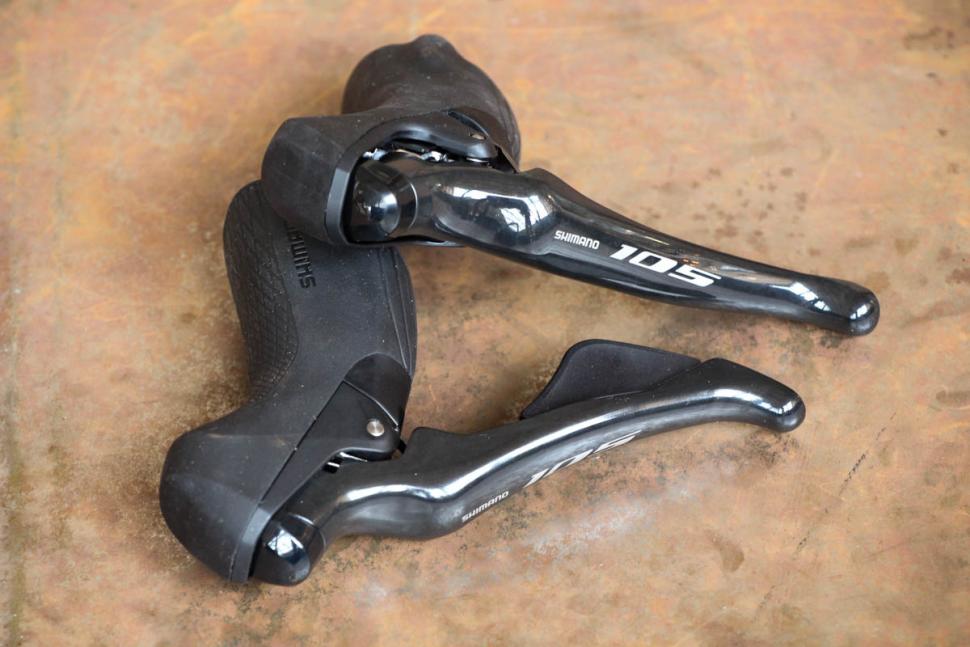

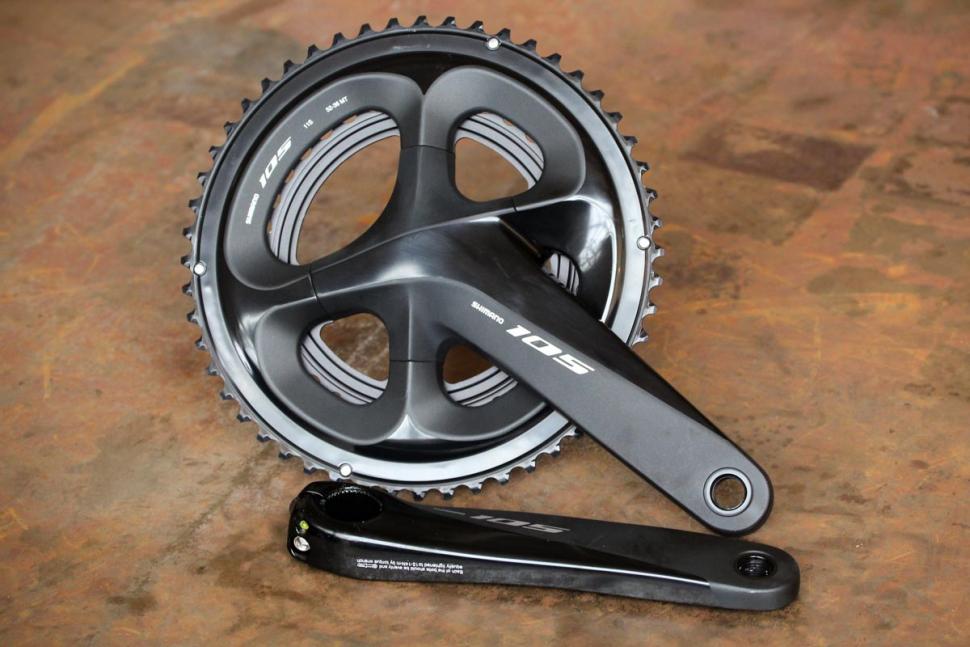
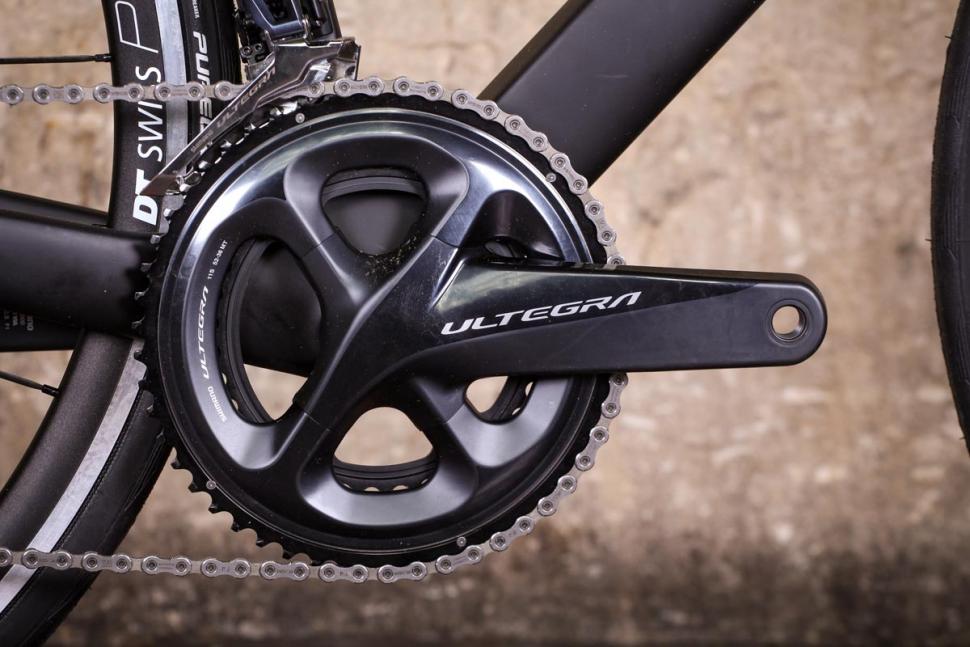


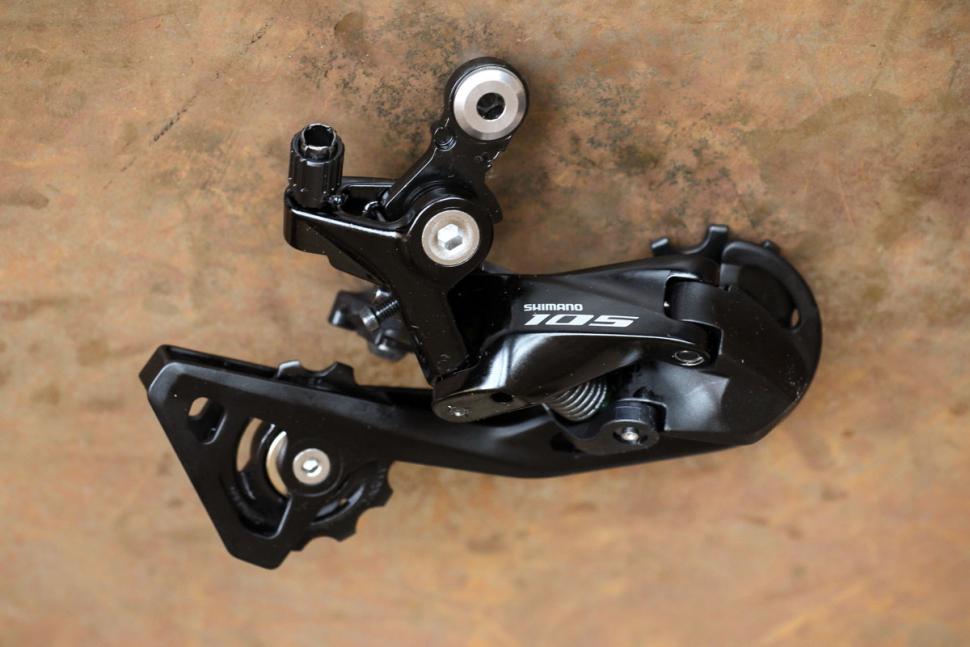
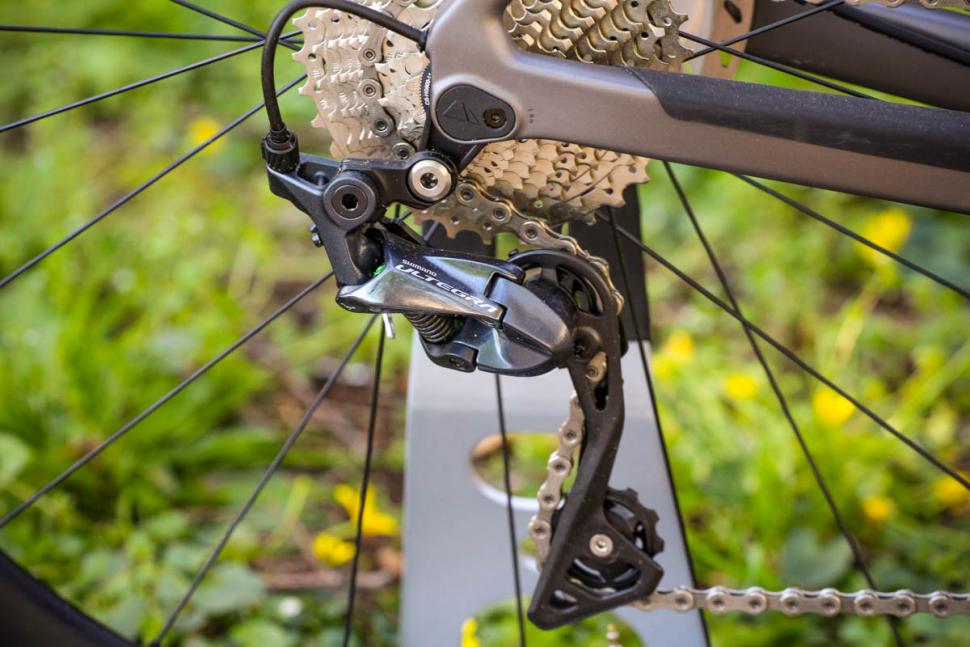
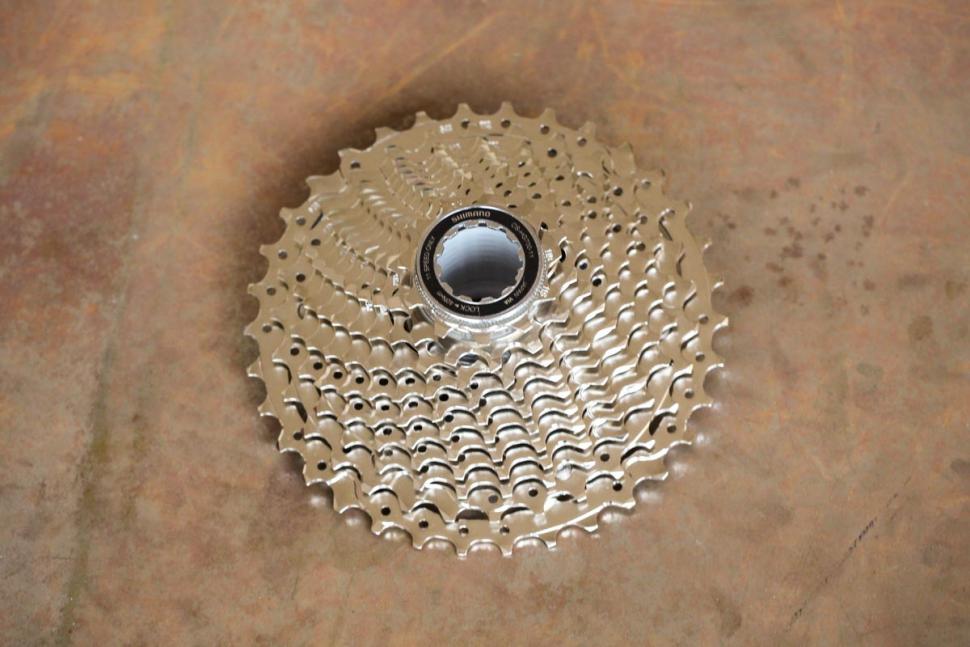

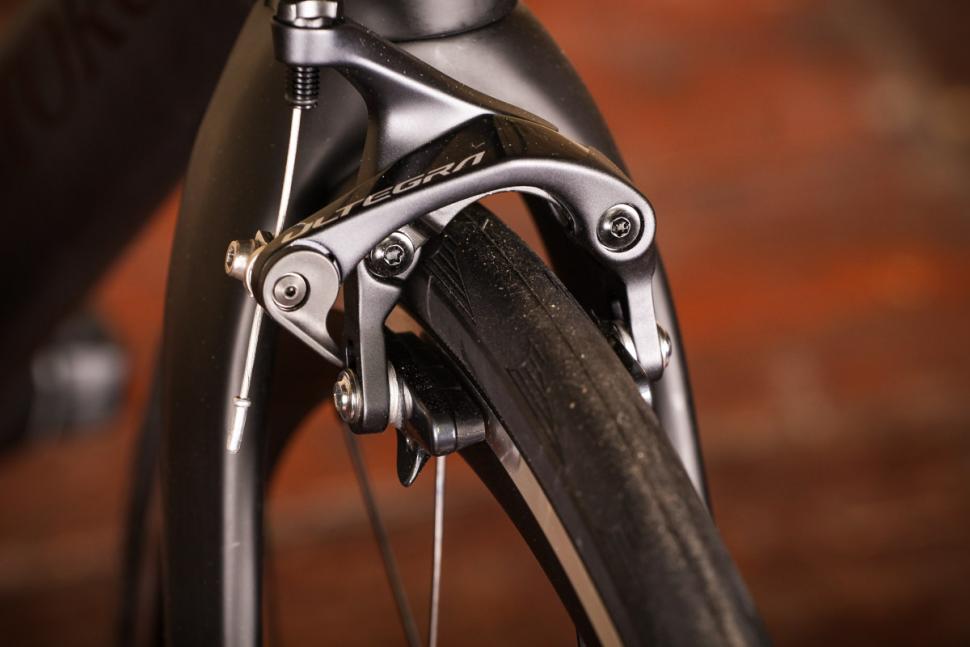
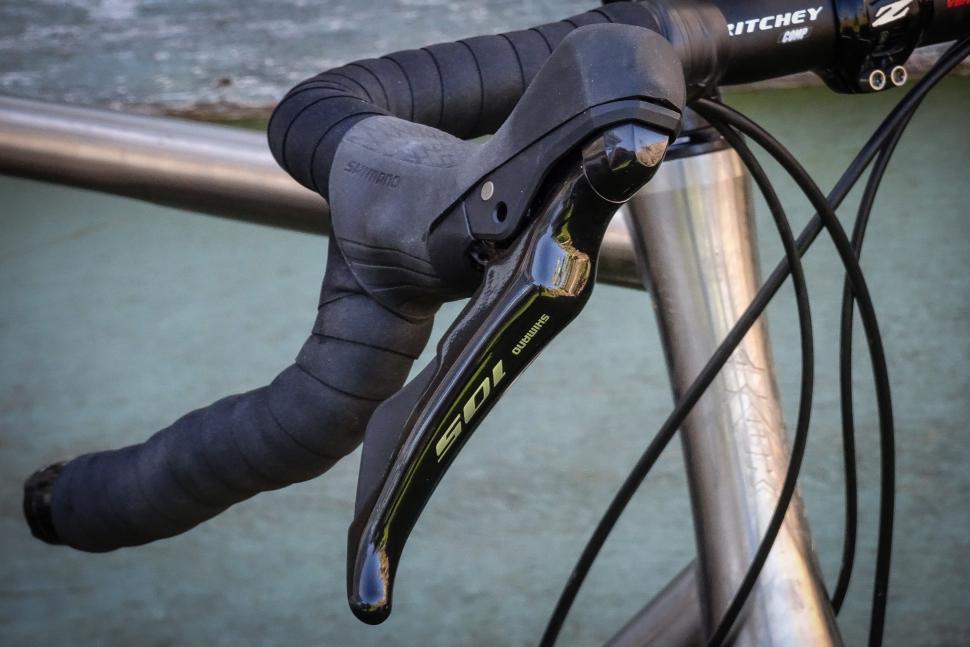
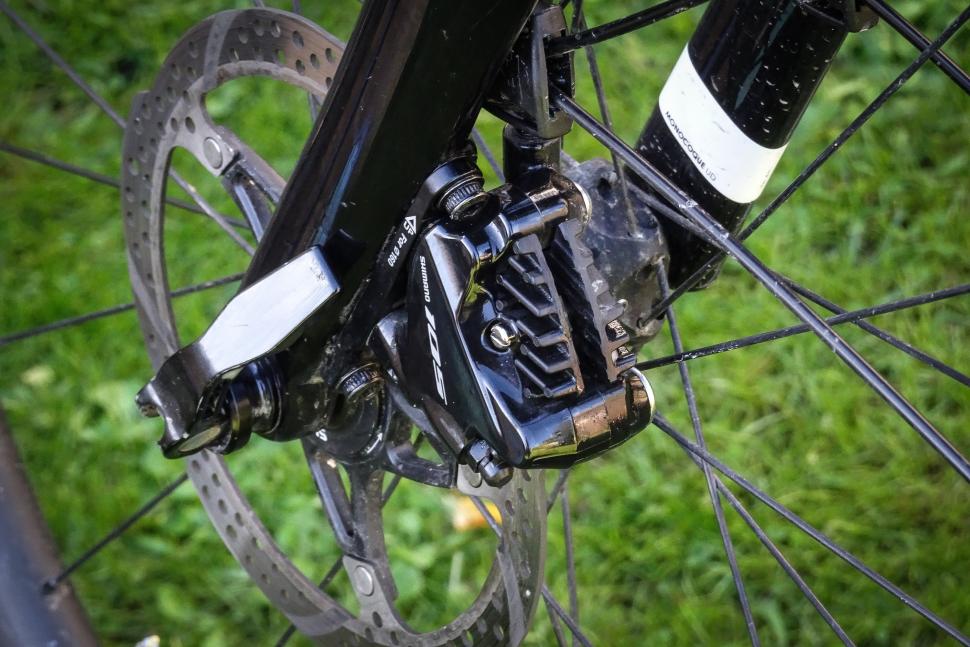
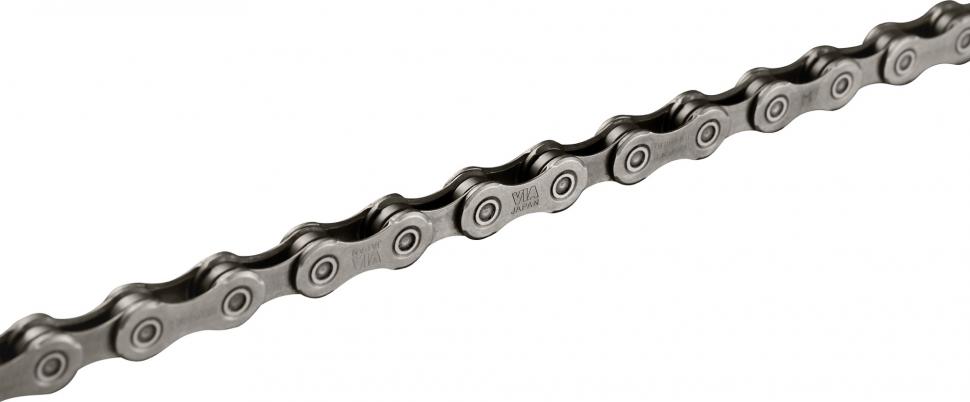
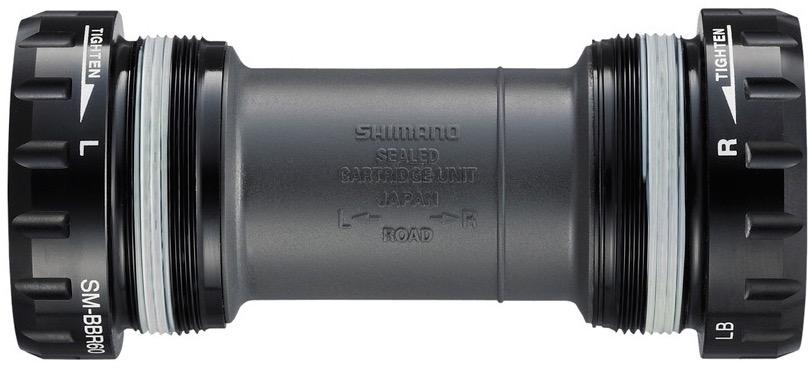

Add new comment
72 comments
I think the fatbirds listing is incorrect. On Shimano's own website the longer axle is only listed on Dura Ace and I note that the fatbirds listed item is not in stock.
As I suggested, other retailers are available.... https://www.evanscycles.com/shimano-ultegra-6800-carbon-4mm-longer-axle-... http://www.chainreactioncycles.com/mobile/shimano-ultegra-spd-sl-6800-4m...
Well, I stand corrected; many thanks for this. I need the longer axle and have only ever found Dura Ace. Maybe the Ultegra option is new?
105 is pretty much perfect for most club riders and amateurs. Anything above, may as well leap to dura-ace, or go campag.
Ultegra sounds a bit naff.
Back in the days of 5600 and 6600 I found that 105 was worse for corrosion in winter but it has always been functionally very good indeed.
I'm not surprised that you can't find any difference in functionality new but the better materials and finish quality does (at least, used to) make some difference 2-3 years down the line.
I thought that was worth it then but I hadn't had kids so was more willing to part with cash for bike bits...
I think the 11 speed 105 is great and was a noticeable improvement in shifting performance over the 10 speed 105. I've been running it on the bike I ride year-round, plenty of rain, for 11,000km now. I've changed the chain twice and had a gear cable snap twice. Still on the same cassette, brake cables, even brake pads, and everything's working smoothly. I don't see myself ever forking out extra for Ultegra.
I saw a similar comparison a while back which said there was minimal difference between Dura Ace and Ultegra, so the logical conclusion here is that 105 and Dura Ace are not dissimilar. None of this should surprise anyone however. In any product type, the law of diminishing returns comes into play, whether it be hifi, cars, or cameras, with marginal improvements in performance costing a disproportionate delta. We all decide how far up the curve we want, and can afford, to go. Some are happy to accept a minimum usable performance, some want to make sure they have the right label on display, some try to compensate for lack of ability by throwing money at kit, and to some, there is a very real and measurable gain in performance due simply to the psychological benefit of knowing they have the best.
There is a moment that all you do is take weight on the bike will be expensive. The important thing is to have a light and light bike you will have to pay more for it
Does anyone happen to know how the tire clearance on the Dura Ace 9000 rear brake calipers compares with the current 105 and Ultegra models?
For some reason I don't get as good braking on my 105 as on my Ultegra, but I do agree there is more tyre clearance. The 105 brake is still outstanding compared to previous brakes, just not quite as good as Ultegra. Suspect, as someone mentioned above, that lesser braking is down to a combination of cable, brake pivots and the bike itself. Apart from that, the groupset doesn't feel that different. I think I would pay (max) GBP 100 more for the Ultegra groupset to get the better Crank and total weight loss but only on my best bike. 105 is fine for the winter one.
One other point - on the pedals, the 105 pedal allows a lighter release setting than the Ultegra. I find the ultegra pedal takes a fair bit of a sideways push to release it and would not be an ideal pedal for rider starting out on clipless. Other than that you need to go up to the D-A pedal with its third larger bearing to notice a difference in pedals.
Close enough, that it might be reasonable to suspect the only reason they're still distinct groupsets is to maintian the premium position of Di2. I can't see a 105 Di2 appearing soon unless someone else produces a midrange electronic groupset that undercuts them.
Fantastic review. Real world concerns for the average consumer. Kudos @road.cc
I help friends and colleagues with bike purchases a lot, and this is exactly the sort of advice only a bike nerd can generally provide. Brilliant that a publication like yourselves can summarise this for everyone.
+1
This. Couldn't agree more. Thought this was one of the best things I've read on road.cc in a while. I am pretty nerdy about bike components (my wife's never really sure whether I prefer building/tinkering or riding bikes...) and found the above article of real value.
Just changed left arm on Ultegra crankset to 105 (Stages) and crankset didn't feel that stiff anymore. When compared, Ultegra crank has bigger cross section than 105... hence goes the stiffness I guess.
P.S. 105 chainring has different construction with crevasses and accumulates a lot of dirt.
I paid £440 for 6800 (Ultegra) in January and it's worth every penny.
Upgrading an older 105 (3-4 years old) to current or last years Ultegra is well worth it but the price difference between the 2 groupsets on new bikes can be huge for big brands and not really worth it IMO. Just get the 105 model and replace it when worn. In my experience, 105 lasts about 4 years and Ultegra just lasts and lasts and lasts (my commuter now has 6600sl - it just won't die!).
We can get entire 5700 and 6800 groupsets for £340 and £440 - £100 difference!
"There’s no reason why you can’t use an Ultegra cassette with an otherwise 105 groupset" says the article...
Of all the mixing and matching, WTF would you do that? Cassettes are consumable items and not even distinguishable to the eye. I can't see any reason why - of all things - you'd want to spend an extra £25 (according to the article's table) on an Ultegra cassette when the rest of the kit is 105!
If you want to treat yourself, at least spend on something that you or others will notice a difference in, like the chainset or rear mech or shifters - even if, as the article confirms, that difference is largely cosmetic.
Otherwise, a good article.
I have no use for an 11-23 or an 11-25, but some people do time trials and crits. Other people just enjoy gurning their knees to dust.
Fair point. Probably the best reason to spend extra on an Ultegra cassette.
I have 105 on the winter bike and ultegra in the summer bike. 105 brakes are better and shifting is the same. Leaning towards 105 on the next new bike as I can't really see the point in the extra money for ultegra.
Unless you've just been going to a dodgy bike shop for "maintenance".
How in god's name do you wear out a rear mech, let alone two in two years
Ive recently put the new tiagra set on my bike and love it, youd be had pressed to tell its not 105 from a quick glance
I have both, and I rather regret the extra spent on Ultegra.
I really think they should just have three non-garbage levels:
- Make Tiagra 11 speed
- Marry 105 and Ultegra
- Dura Ace
That way, there's a clear upgrade path from entry-level to pro, and none of the confusion that this article attempts to address.
More expensive to replace then.
I've just opted for a bike with the new Tiagra .
Reasoning being it was £300 cheaper, I have loads of cassettes, 10 speed seems to be enough for me, it's function is excellent better than any of the old 105, ultegra 10speed stuff and according to road.cc it weighs 2584 grams so lighter than new 105.
The higher spec components are sort of a development tax on those who can afford the difference and don't mind paying a bit extra for their hobby. The extra money in the component manufacturers pocket enables them to make choices about investing in R&D that they might not otherwise have. The benefits of which trickle down to the more budget lines in due course.
@Jimmy
Could you tell me what's the mileage you did in those two years, resulting in 2 cassette changes?
I'm asking as I have run 105 for 11,000km in about 1 year and 3 months - changed one BB (at 6000km), RD pulleys (at 10,000km) and two KMC chains (at 5,000 km). I'm still on first cables (Jagwire), but in maybe 2000km I will change them.
How did you manage to destroy so many components? I suspect you have Peter Sagan's wattage or some part of maintenance (cleaning/lubing) is not ideal, or just luck maybe.
Note that I'm also relatively large (192cm, 85kg) with lots of wattage
O
Now, you see to me, I believe there is a night and day performance difference between the two groupsets.
In that I am talking about braking performance and durability.
My 105 groupset is now approach two years old, and in that time, I have;
- worn out 2x rear mechs
- worn out 1x bottom bracket
- worn out 1x large chainring
- 2x cassettes
- Front STI
- Both brakes callipers
Conversely, the last Ultegra 6800 groupset I rode (which convinced me to purchase 105), had worn through nothing after 12 months of use.
I've not included chains in teh above, as I am fairly religious at changing these every 2,000km.
The braking performanc eof 105 is no where near as good as Ultegra, which is purely, IMO, down to the greater resistance in bearings, pivots nad cable of the 105 set up as apposed to Ultegra.
I think you might have been unlucky with your 105's durability - I've not noticed any difference in wear. Or it could be that I've been lucky with mine.
To be fair, I can't really comment on the difference between the brakes. I've got long drop non-Shimano calipers on the winter bike, rather than 105. (And they're terrible...)
Slightly off topic, but are you aware that Shimano has the R650 long drop calipers, which are supposed to match Ultegra level? They're supposed to be as good as short drop Ultegra calipers, though I've never tried them myself (I put TRP RG957 on my otherwise Campagnolo equiped bike, which are very good too but even more expensive).
Pages